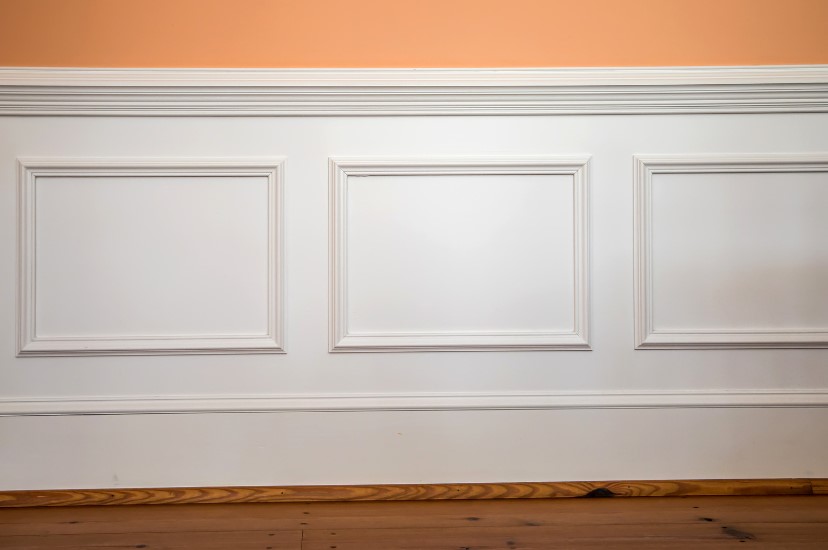When it comes to dressing up your walls, the world of interior design provides an array of delightful options. From the classically appealing wainscoting to the functional chair rail molding, there is much to choose from. But what’s the difference between these two wall treatments? Let’s break ’em down.
What Is Wainscoting?
Wainscoting is a type of wall paneling that typically covers the lower third to half of a wall. It’s been a staple in interior design since the 14th century, adding a touch of elegance and character to a space.
Not only does it boost aesthetic appeal, but wainscoting also offers a practical aspect – it helps protect the walls from scuffs and dings, particularly in high-traffic areas.
Wainscoting comes in a range of styles, including beadboard, board and batten, and raised or flat panels. Each style offers a unique aesthetic, allowing homeowners to customize according to their design preferences.
What Is Chair Rail Molding?
Chair rail molding, on the other hand, is a specific type of decorative trim that is installed horizontally around the perimeter of a room, typically at about one-third the height of the wall.
Originally, it was designed to protect walls from being damaged by chair backs – hence the name.
These days, while it still provides that protective function, chair rail molding has evolved to become more of a decorative element. It often serves to break up a large wall or to separate two different wall finishes – for example, paint above and wainscoting below.
Wainscoting vs. Chair Rail Molding: The Differences
While wainscoting and chair rail molding can coexist in the same space, they do have distinct differences. Here are some key points to consider:
Purpose and Function
As mentioned, wainscoting serves dual purposes: it adds aesthetic value and protects lower parts of walls from damage.
Chair rail molding, while originally intended to protect walls from chairs, is now predominantly used as a decorative element to divide different wall treatments.
Positioning on the Wall
Wainscoting typically covers a larger portion of the wall, extending from the baseboard to roughly one-third or halfway up the wall.
In contrast, chair rail molding is a single strip of molding that runs horizontally around the room, usually at a height corresponding to where the back of a chair might hit the wall.
Design and Style
Wainscoting can take on various forms and styles, from beadboard to raised panels, offering more design flexibility.
Chair rail molding, while available in various designs, is typically a single piece of trim that serves as a line dividing different wall treatments.
Conclusion
In conclusion, while both wainscoting and chair rail molding can add charm and character to your rooms, they serve different functions and bring their own unique style to the table.
So, whether you’re looking to protect your walls, break up large spaces, or just enhance the visual appeal of your room, these two design elements offer great options to consider.
